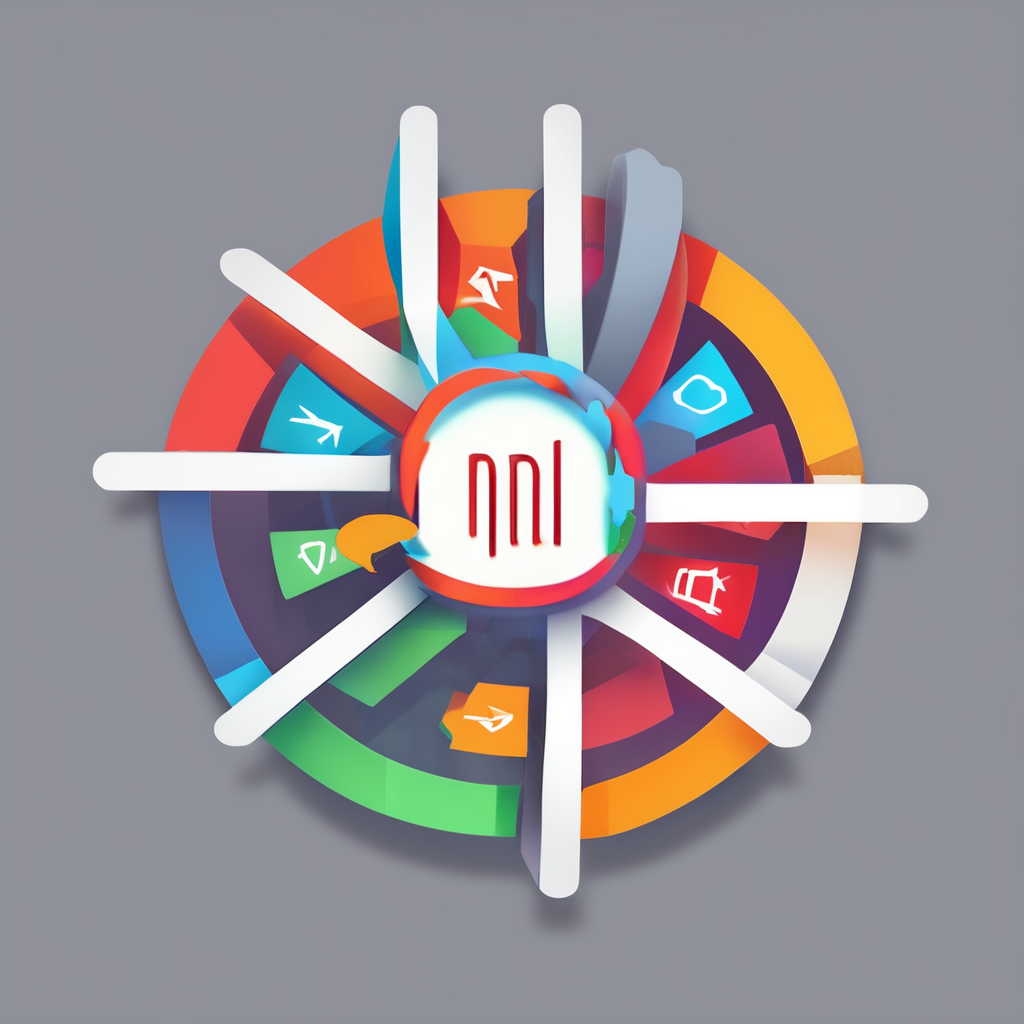Overview of AI-Powered Customer Support Chatbots
AI chatbots are becoming essential tools within customer support, especially in the context of e-commerce automation. These intelligent applications simulate human conversations, providing immediate assistance which drastically reduces wait times. By automating responses to common inquiries, businesses can focus their human resources on more complex tasks, elevating overall efficiency.
In today’s market, e-commerce automation is steering towards personalized customer experiences through advanced technologies. AI chatbots play a pivotal role in this transition by learning from user behavior and adapting their responses accordingly. This capability enables businesses to offer tailored experiences, thereby increasing customer engagement and satisfaction.
In parallel : Transforming Document Security: The Ultimate Guide to Leveraging Blockchain Technology for Document Management
The benefits of implementing AI chatbots are multifold. For businesses, they offer significant cost reductions and heightened service capabilities without the need for constant human oversight. For customers, chatbots provide 24/7 support, delivering answers precisely and promptly regardless of time zones or business hours.
In summary, the integration of AI chatbots into customer support systems brings about a win-win scenario: businesses optimize their operations while customers enjoy a seamless and efficient shopping journey. As the landscape of e-commerce automation evolves, so too will the sophistication and reach of chatbots in reshaping customer support dynamics.
Have you seen this : Essential Cybersecurity Strategies for Protecting AI-Driven Financial Analytics: Securing Smart Solutions
Strategies for Implementing AI-Powered Chatbots
Implementing AI-powered chatbots strategically is crucial for enhancing customer engagement and delivering effective support. A fundamental step in chatbot implementation is identifying your business needs. Assessing specific customer service challenges helps in determining the objectives and goals for the chatbot. Is your primary goal to reduce wait times, improve response accuracy, or perhaps increase sales? Clear objectives guide the development and integration process.
Identifying Business Needs
Start with a thorough assessment of your customer service pain points. Common challenges include high inquiry volumes and inconsistent response quality. Once identified, setting targeted goals for your chatbot can streamline the implementation process and provide measurable outcomes.
Choosing the Right Technology
Selecting the appropriate technology for your chatbot is equally significant. Numerous popular platforms exist, each with unique features suited to various e-commerce needs. When choosing, consider factors like integration capabilities with existing systems, customization options, and scalability. This ensures your chatbot can evolve with your business needs and market trends.
Designing Effective Conversation Flows
Effective conversation flows are essential for seamless interactions. Best practices include crafting intuitive, user-friendly dialogues and utilizing user data to personalize exchanges. Intuition and clarity help maintain engagement, while personalized experiences elevate satisfaction, increasing the likelihood of positive customer outcomes.
Enhancing User Experience with AI Chatbots
When it comes to user experience, the design of AI chatbots is pivotal. A well-structured, intuitive user interface can significantly impact how customers interact with chatbots. Streamlined designs reduce user frustration and facilitate smooth, efficient interactions, allowing customers to find needed information quickly.
Personalization enhances this experience by adapting interactions based on user behaviour. Techniques such as analysing past interactions or purchase history can tailor responses, providing a more in-depth, engaging experience for the customer. Personalization not only makes users feel valued but also increases the likelihood of repeat engagement.
To achieve continuous improvement, collecting user feedback is vital. This can be done through brief surveys post-interaction or by monitoring user satisfaction scores. Feedback mechanisms allow businesses to understand what works and identify areas needing enhancement, thus refining chatbot interactions over time.
Ultimately, the synergy between intuitive design, personalization, and regular feedback loops can significantly elevate the chatbot user experience. As user expectations evolve, businesses must remain agile in updating their chatbots to meet these dynamic needs, sustaining engagement and satisfaction across all customer touchpoints.
Integration Best Practices
Integrating AI chatbots seamlessly into existing systems is key to optimizing customer support and enhancing e-commerce automation. A robust integration involves aligning chatbots with current CRM and e-commerce platforms, ensuring that every customer interaction feels uninterrupted and cohesive. For instance, when a customer inquires about an order, a properly integrated chatbot can access real-time data from the CRM, providing updates or assistance without delays.
Integrating with Existing Systems
A successful integration strategy starts with a comprehensive audit of your existing systems, identifying areas where chatbots can add value. This includes ensuring compatibility with CRM and e-commerce platforms. It’s vital that chatbots offer seamless experiences across multiple touchpoints, maintaining consistent quality and response regardless of the channel or device used by the customer.
Data Management and Utilization
Efficient data management is essential for leveraging chatbots effectively. Utilizing customer data allows AI chatbots to provide personalized experiences, adjusting responses based on individual purchase history or past interactions. However, while exploiting data is beneficial, maintaining data privacy and security is paramount. Ensuring that customer information is safeguarded increases trust and compliance with legal standards, such as GDPR, fostering a positive customer relationship.
Measuring the Success of AI Chatbots
Evaluating the effectiveness of AI chatbots in customer support is essential for optimizing their impact. Key performance indicators (KPIs) such as response time, accuracy rate, and user engagement are crucial metrics. Analyzing these metrics provides a comprehensive understanding of a chatbot’s efficiency and user satisfaction. Quick response times can significantly enhance customer satisfaction, reflecting the chatbot’s ability to handle queries promptly.
To accurately assess chatbot effectiveness, tracking and analyzing interactions is vital. This process involves examining transcripts for quality and relevancy, identifying patterns or issues, and making necessary adjustments. Analytics help in understanding user behaviours, allowing for the fine-tuning of chatbots to offer better customer support.
Calculating the return on investment (ROI) for chatbot implementation is another critical aspect. While chatbots can reduce operational costs by minimizing human intervention in repetitive tasks, they also have the potential to boost customer engagement, leading to higher sales. ROI calculations should consider savings from efficiency gains and increased revenue from enhanced customer interactions.
By consistently monitoring these metrics and adapting strategies accordingly, businesses can ensure their chatbots remain effective and aligned with e-commerce automation goals while continuing to deliver exceptional user experiences.
Addressing Common Challenges
When incorporating AI chatbots into customer support, it’s pertinent to address notable challenges and limitations that may arise. Understanding these aspects ensures businesses can set realistic expectations and strategize effectively.
Understanding Limitations of AI
AI chatbots, despite being advanced, have limitations. They may struggle with complex inquiries that require nuanced understanding or emotional intelligence. Initially, chatbots are best suited for handling straightforward queries. However, recognizing their limitations allows businesses to seamlessly integrate human intervention where necessary. This hybrid approach ensures more intricate customer needs are met, enhancing overall service effectiveness.
Overcoming Customer Hesitance
To build customer trust, it’s crucial to demonstrate the chatbot’s reliability and efficiency. Transparency about the chatbot’s functions and setting expectations regarding response capabilities is essential. Educating customers on the chatbot’s benefits, such as faster response times and consistent availability, can alleviate hesitations. Businesses might consider offering tutorials or informative content to showcase successful interactions, further solidifying confidence.
By attending to these common challenges, companies can optimize their AI chatbot integrations to ensure they complement human efforts rather than serve as standalone solutions. Such strategic efforts not only address user concerns but also cultivate trust, positioning chatbots as reliable assets in modern customer support strategies.
Case Studies and Success Stories
Exploring real-world case studies and success stories where AI chatbots have transformed e-commerce can provide valuable insights into the practical benefits these tools offer. Many leading brands now leverage AI chatbots to enhance customer support, streamline operations, and drive customer engagement.
One notable example is Domino’s Pizza, which implemented a chatbot to offer a more convenient ordering process. Customers can use the chatbot to place orders via text or social media, streamlining the purchasing journey. This innovation increased customer satisfaction while boosting sales and operational efficiency.
Another success story comes from Sephora, where the chatbot assists with personalized beauty advice and product recommendations. By integrating customer data, the chatbot offers tailored suggestions, resulting in heightened customer engagement and satisfaction.
A lesson from these successes highlights the importance of aligning chatbot functionalities with specific business goals. For Domino’s, the focus was on simplifying order placement; for Sephora, it was about enhancing the personalized shopping experience.
Through examining these case studies, businesses can learn how to tailor their chatbot strategies for maximum impact. These tools are not one-size-fits-all, but when thoughtfully implemented, they can yield measurable benefits across various e-commerce environments.
Future Trends in AI-Powered Customer Support
Emerging technologies promise to revolutionise the landscape of AI-powered customer support, pushing AI chatbots beyond current boundaries. One significant development is the rise of natural language processing (NLP) advancements, enabling chatbots to understand and respond with near-human precision. Such improvements facilitate better customer engagement by allowing AI chatbots to manage more complex queries, enhancing the overall experience.
Furthermore, integration with voice recognition technology is set to become more prevalent, allowing AI chatbots to engage with users through voice-activated assistants. This trend aligns with the growing consumer preference for multitasking and hands-free interactions, thereby expanding the utility of chatbots in daily life.
In the realm of e-commerce automation, the future also points towards enhanced personalisation capabilities. As chatbots gain more access to customer data and machine learning tools, they can tailor recommendations with increased accuracy, leading to more personalised shopping experiences.
Businesses preparing for these next-generation capabilities must invest in upgrading their technological infrastructure and workforce skills. Anticipating and adapting to these trends ensures that companies remain competitive, delivering superior customer support while leveraging chatbot evolution effectively. The foresight into these trends will be crucial for thriving in the future landscape of e-commerce automation.







